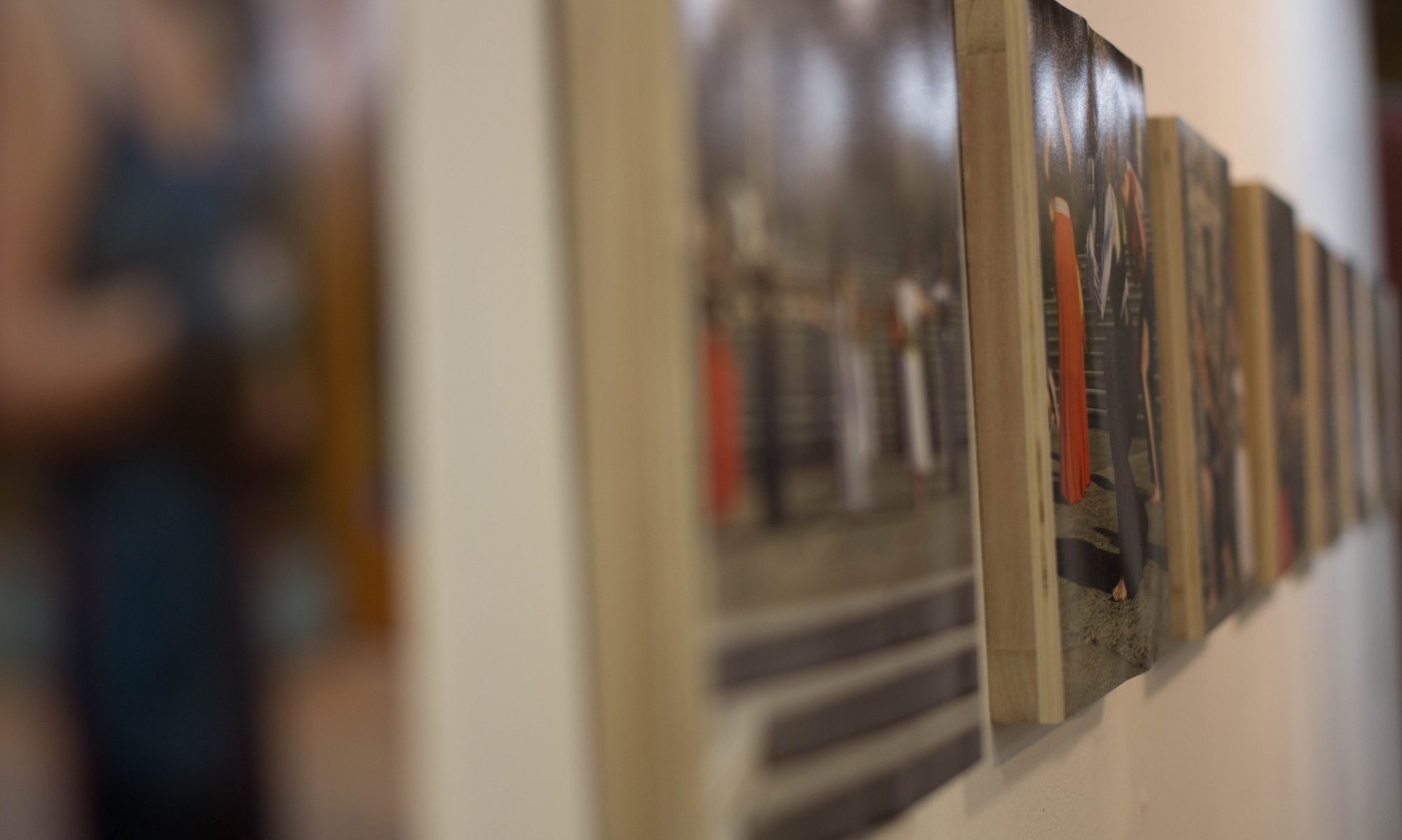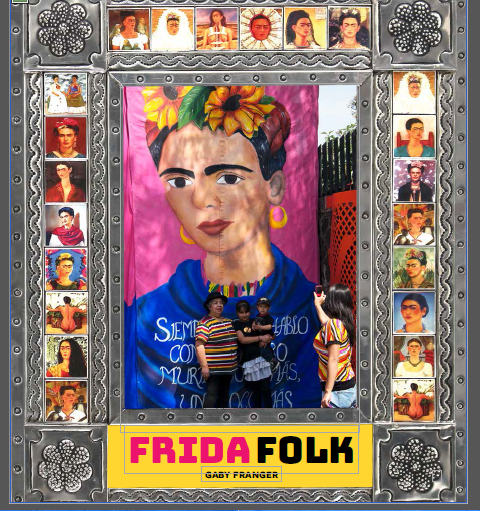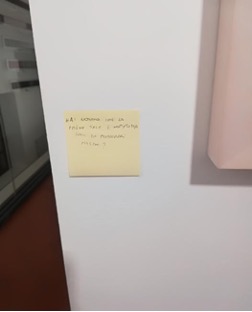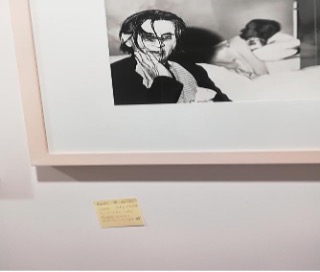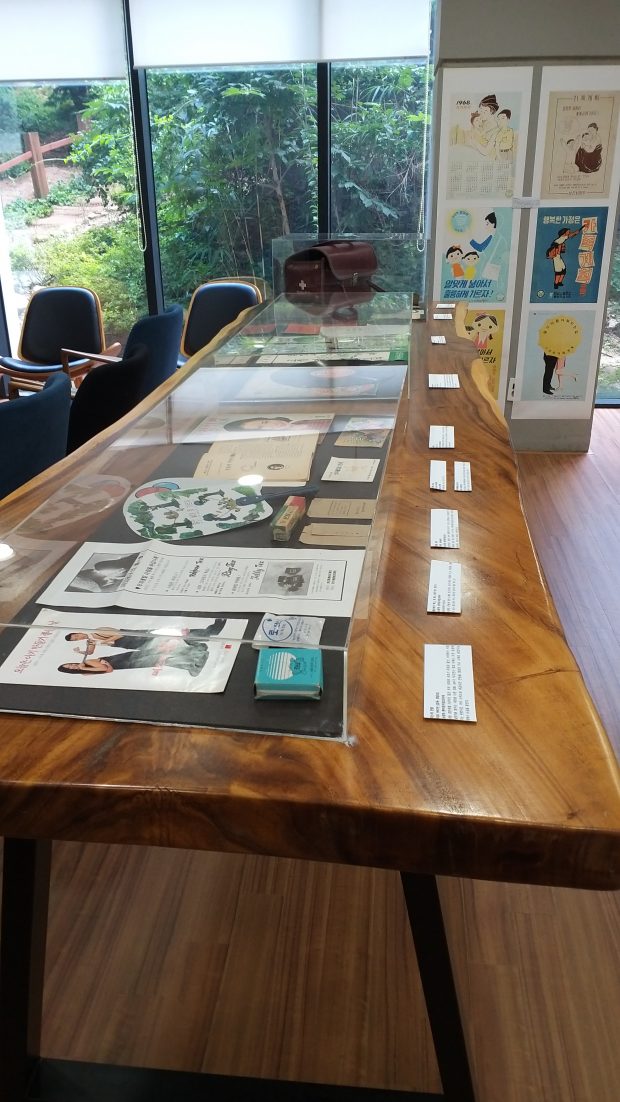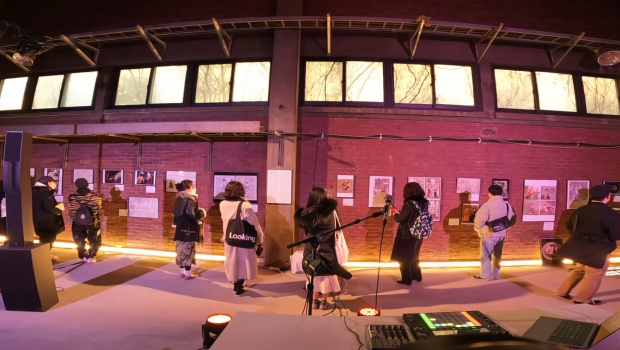A short film with homecare workers talking about their everyday experiences in providing homecare.
Gaby Franger Publications
Franger, G. (2023). Else Oppler. Eine außergewöhnliche Künstlerin 1875 – 1965. (Else Oppler. An extraordinary artist). Nürnberg: Frauen in der Einen Welt.
Auer, S, Franger, G. & Niehoff-Hack, A. (Eds) (2022). Plakat Kunst. Poster Art. Nürnberg: Frauen in der Einen Welt.
Bala, E,. Franger, G.& Jakovljević-Šević, T. (2022): Oko Glave, Različiti diskursi marame kao kulturnoc ozhnačitelja. (Around the head. Discourses on the meaning of the headscarf). Novi Sad.
Cyprian, G., Franger, G.& Ghanem, R. (Eds) (2021) Technik#Weiblich#Logisch. Digital. Gendergerecht. Nachhaltig. (Technology#Female#Logical – digital, equitable, sustainable). Nürnberg: Frauen in der Einen Welt. https://www.frauenindereinenwelt.de/de/DE_Publikationen/DE_Kataloge/DE_2020-22_Technik-Weiblich-Logisch.
Clover, D., Franger, G. (2021). Cultures of Headscarves. Feminist Adult Intercultural Education Through a Challenging Exhibition, in: Kathy Sanford, Darlene E. Clover, Nancy Taber, und Sarah Williamson: Feminist Critique and the Museum, Brill | Sense, S. 284-305
Franger, G., Schönweger, A. (2021): Cultures of headscarves: Intercultural Education through a Challenging Feminist Exhibition, in: Clover, D. E., Dzulkifli, S., Gelderman, H., & Sanford, K. Feminist Adult Educators’ Guide to Aesthetic, Creative and Disruptive Strategies in Museums and Community. University of Victoria Gender Justice, Creative Pedagogies and Arts- Based Research Group. https://onlineacademiccommunity.uvic.ca/comarts/feminist-adult-educators-guide/.
Franger, G. (2019) Dialogue for reconciliation: Exhibition concepts. In Akkent, M.. Kovar, N. Feminist Pedagogy: Museums, Memory Sites and Practices of Remembrance. Istanbul Publication of Istanbul Women’s Museum, p. 244-251.
Franger, G. (Ed.) (2019) Alltag, Erinnerung, Kunst und Aktion. Rückblick nach Vorne. (Daily Life, Memory, Art and Action. Retrospektive Back to the Future). Nürnberg: Frauen in der Einen Welt.
Franger, G. (2019) Artivismus – Kreativer Widerstand. (Artivism – Creative Resistance). In Frieden ist eine Kunst. Kultur, Konflikt und Widerstand. Bund für Soziale Verteidigung e. V. Hintergrund- und Diskussionspapier, No. 65, June, p. 44-52.
Bala, E., Franger, G. (Eds). (2019) (How feminine is the city? Fürth and its Sister Cities Limoges, Marmaris, Midoun, Paisley, Xylokastro. Midoun.
https://www.frauenindereinenwelt.de/de/DE_Publikationen/DE_Kataloge/DE-arab_2018_weibliche_Stadt.
Franger, G. (2018) Frida Folk. Chennai: Tara Publisher.
Bala, E., Franger, G. (Eds) (2018). Wie weiblich ist die Stadt? Was Kommunen können und was Frauen leisten. Nürnberg: Frauen in der Einen Welt.
Franger, G. (2017). Discovering Commonalities in Apparent Differences – Changing the Perspective on the Self and the Other. In Akkent, Meral (Ed) Women’s museums: Centre of Social Memory, and Place of Inclusion, Istanbul: Publications of Women’s Museum Istanbul, p. 166-179.
Cyprian, G., Franger, G. (Eds) (2017): ausgekocht? (The end of cooking? boiled out?). Nürnberg: Frauen in der Einen Welt.
https://www.frauenindereinenwelt.de/de/DE_Publikationen/DE_Kataloge/DE_2016-17_ausgekocht.
Franger, G. (Ed). (2015). Kriegssocken und Peacemakerinnen. (War socks and Peacemakers). Nürnberg: Frauen in der Einen Welt.
Franger, G. (2014). Arpilleras – arte textile testimonial de mujeres en el Perú entre elaboración del trauma, denuncia y medio de subsistencia. (Arpilleras – women’s testimonial textile art in Peru between trauma elaboration, denunciation and means of subsistence). In Perú: Medios, Memoria y violencia. Lima, p. 157-174.
Franger, G. (2014). Survival-Empowerment – Courage: Insights into the History and Developments of Peruvian Arpilleras. In Marjorie Agosín (Ed): Stitching Resistance. Women, Creativity, and Fiber Arts, Kent, p. 101-118.
Franger, G. (Ed.) (2009). Schicksalsfäden. Geschichten in Stoff von Gewalt, Hoffen und Überleben.(Threads of destiny: Testimonies of violence, hope and survival). Nürnberg: Frauen in der Einen Welt. https://www.frauenindereinenwelt.de/de/DE_Publikationen/DE_Kataloge/DE_2009_Schicksalsfaeden.
Bennewitz, N., Franger.G. (Eds) (2003): Geschichte der Frauen in Mittelfranken. Alltag, Personen und Orte, (History of the women in Middle Franconia. Everyday life, people and places). Cadolzburg: Ars Vivendi.
Bennewitz, N., Franger.G. (Eds) (1999): Am Anfang war Sigena. Ein Nürnberger Frauengeschichtsbuch. (In the Beginning was Sigena. A Nuremberg women’s history book). Cadolzburg: Ars Vivendi.
Franger, G. (Ed).(1998). Verflechtungen- Korbmacherinnen in Zambia und in Oberfranken, (Entanglements – female basket makers in Zambia and Upper Franconia). Nürnberg: Frauen in der Einen Welt.
Franger, G. (Ed) (1995, 1996). The art of survival. Fabric Images of Women’s Daily Lives, Madras und Nürnberg (German, Russian and English).
Franger, G., Pablo, M. (Eds) (1994) Abenteuer Ehe. Heiratsmigrantinnen gestern und heute. (The adventure of marriage. Marriage migrants yesterday and today). Nürnberg: Frauen in der Einen Welt.
Franger, G. (Ed) (1992) „Das hätte ich mir nicht träumen lassen, daß ich mal Indianerwäsche auf meine Wäschelein’ häng.“ Begegnungen– Aymarabäuerin in Franken, der Oberpfalz und Österreich. (“I never dreamed that I would be hanging Indian laundry on my clothes.“ Encounters) Nürnberg: Frauen in der Einen Welt.
Franger, G., Scheub, U. (Eds). (1991). „Wir werden nicht schweigen“. Frauengeschichten aus Israel und Palästina. (“We Will Not Be Silent.” Women’s Stories from Israel and Palestine). Nürnberg: Frauen in der Einen Welt.
Franger, G. (1988) Arpilleras, Cuadros que hablan. Vida cotidiana y organización de mujeres, Lima.
Akkent, M., Franger,G. (Eds). (1987). Das Kopftuch, Ein Stückchen Stoff in Geschichte und Gegenwart. (The headscarf, a piece of fabric in the past and present.) Frankfurt: Dağyeli Verlag (German and Turkish).
Changing gendered patterns of power,Canada-Italy Innovation Award 2020 Italy
The project Changing gendered patterns of power through creative dialogic pedagogies of the Canada-Italy Innovation Award 2020 of the Embassy of Canada in Italy funded our Visiting to the University of Victoria (BC), Canada, between November 12th-19th, 2022. The logic of the project was to experiment in Italy with feminist, creative and dialogic pedagogies and bring it to Canada to share and discuss it with a different population. The methodologies that we brought to Canada include:
– Cooperative inquiry through contemporary feminist photography
– Poetic collaborative writing starting from embodied experience of art
– Experiential translation with an educational perspective.
In L’altro sguardo/The other gaze in a class room talk we presented a pedagogical practical theory that celebrates complexity, and triggers deliberate action, starting from the participants’ reflexive writing from photographs taken from the internet. ‘Aesthetics’, or different media and languages, reveal through presentational knowing (Heron, 1996) and abduction (Bateson, 1979) how our perception and our subjectivity are shaped by culture, by our webs of affiliation. They may also offer ways to collectively interrogate what we know, and how we know.
Through a cooperative method of writing-as-inquiry (duoethnography, Sawyer & Norris, 2013) we invited students to a dialogic exploration in pairs and in plenary of feminism in our lives, and share ideas for applying aesthetic methodologies in social research (Leavy, 2015) and adult education for social justice (Clover, Sandford & Butterwick, 2013). The talk was based on the article:
Formenti, L., Luraschi, S., & Del Negro, G. (2019). Relational aesthetics. A duoethnographic research on feminism. European journal for research on the education and learning of adults, 10(2), 123-141.
In this class, the students were all from different migratory backgrounds. Two were men: the English-Canadian lecturer and a Canadian student from Ontario with Swedish origins. To the question “Are you a feminist?”, they replied that their relationship to feminisms (theory and practice) developed thanks to women in their lives. Picking photographs from the internet as well as from personal archives to talk about feminisms allowed new intimate conversations in the classroom which then continued at the pub.
L’altro sguardo/The other gaze. Reflexive writing from women photography in arts-based research. Talk in Tim Hopper’s research class (EPHE 585 (PO1): Qualitative research genres applied to education, health and society – Thursday, November 17th, 16:30 18:00, McKinnon Building, #092
Feminist hack, Cinisello Balsamo, Milan
On 16th January 2018, Darlene Clover, Nancy Taber and Kathy Sanford conducted a feminist museum hack visiting the collection of photographs in the participatory museum of photography near Milan, with a group of high school and university students, teachers, curators and researchers. After presenting the methodology, the participants went to the exhibition:
The series on display, realized over a span of time from the 1960s to the early years of the new millennium, are very different in terms of theme, genre, visual language, technique, format and support. The exhibition features works organized by major themes. The first floor gallery hosts series about the body – from social reportage to Body Art – along with other series closer to abstraction and various forms of experimentation. The upstairs gallery presents landscape-related projects, understood both in the narrow sense of territory and the broader sense of social environment, which also represent a symbolic space of visual enquiry and linguistic hybridization. (HTTPS://WWW.MUFOCO.ORG/EN/P ERMAN ENT-EXHIBITION-SERIES/)
Each person made comments on a post-it and sticked it on the wall near the artwork. The guiding research questions had to do with whose gaze, who exhibited this way, who is invisible, how would you tell this story. The participants are invited to walk and read all comments and reconvene at the end for a collective conversation about power, feminism, and museums.
Hai notato che la prima sala è composta solo da fotografi maschi? Did you notice that the first room shows pictures of only male photographers?
Come ti sentiresti se la donna in questa foto fosse la tua mamma o tua sorella? How would you feel if this in the photo was your mother or sister?
Gender Museum Korea
Gender Museum Korea
Gender Museum Korea was founded on December 17, 2020, in the midst of the COVID-19 pandemic, as an alternative space to advance women’s and gender culture and history in Korea. It has 12 board members who are active in various fields, including women historians, museum directors, architects, journalists, curators, artists, and more than 100 general members. Although the organization receives funding from several public institutions, including the Seoul National University Social Responsibility (SNUSR), it maintains independent operation and autonomy as its most important principles.
Gender Museum Korea aims to be a creative museum that is not limited by physical space. It conducts various exhibitions and educational programs to foster women’s and gender culture and history in Korea, and at the same time, it aims to realize the global agenda of women in the world and exchange activities with overseas women’s museums. Gender Museum Korea started as a virtual museum and is collecting women’s and gender-related artifacts with the intention of converting to a physical museum in the future.
Gender Museum Korea has been holding pop-up special exhibitions twice a year since its inaugural exhibition, “Women Who Shouted Their Dignity” (December 17, 2020). Korean society is fraught with ideological, generational, and gender conflicts, but these conflicts are also the foundation of the incredible vitality that drives Korean society today. Gender Museum Korea pays particular attention to gender and generational conflicts in the direction of its exhibitions and education, and seeks solutions through cultural and artistic approaches. Gender Museum Korea conducted the Song & Dance Project, titled “Shout Out: 100 women glorified Korean history.”
Through collaborations with feminist artists and educational experiments with students participating in the “From Classroom to Gender Museum” project, it held the following exhibitions: “Sexuality, Love, and Herstory” (July 23~August 10, 2022 at the Museum of Modern and Contemporary History Damda), “Non-binary Collaboration: Young People, Sexuality and Love” (December 28~29, 2022 at the Power Plant 68, SNU), and “Contraception in History” (July 24~31, 2023 at the Garam Lee Byeonggi Hall, SNU). In particular, the “Contraception in History” exhibition attracted a lot of interest from university students and was on tour at the Hanyang University (October 23~November 12, 2023). Several tours are scheduled at universities in the provinces.
Cord Name: Non-Binary Exhibition
The Gender Museum in Seoul South Korea curated a pop-up exhibition titled Cord Name: Non-Binary. Young People, Sexuality and Love, at Seoul National University in early 2023. This initiative also included musical performances, dance, performing arts, and seminars over a two-day period. Many people visited the exhibition and took part in the events including the university president, faculty members, museum directors, students, and the general public. The exhibition was also covered on television.
Kyehyeong Ki
Exhibition: UCA – Retrospective: Creativity past, present and future.
Exhibition: UCA – Retrospective: Creativity past, present and future.
Jan 27th to 15th April 2023
The University for the Creative Arts (UCA), in Rochester, Kent, England, is closing in July 2023. An exhibition was held to acknowledge the work of staff and students, entitled UCA – Retrospective: Creativity past, present and future. Accepted for display at Rochester Arts Centre, 95 High Street, was a found poem, created by Bev Hayward. The text was gifted to her by the women of the Feminist Imaginary Research Group; they met at Edge Hill University in the summer of 2022 and their words and phrases are embroidered on calico with a handstitched border, the design of which is by Theo Harris. It explores imaginative ways, as artists – educators. For further information please contact:
Bev Hayward
Birkbeck College University of London
b.hayward@bbk.ac.uk
